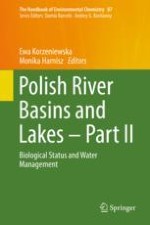2020 | OriginalPaper | Chapter
Selected Aspects of Lake Restorations in Poland
Authors : Michał Łopata, Renata Augustyniak, Jolanta Grochowska, Katarzyna Parszuto, Renata Tandyrak
Published in: Polish River Basins and Lakes – Part II
Publisher: Springer International Publishing
Activate our intelligent search to find suitable subject content or patents.
Select sections of text to find matching patents with Artificial Intelligence. powered by
Select sections of text to find additional relevant content using AI-assisted search. powered by
